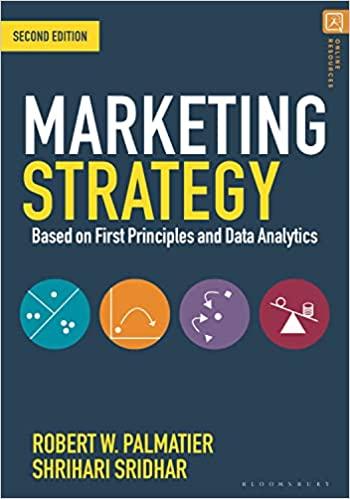Founded in 2006 in Bangalore, India, MobilMax Incorporated (MOIC) is one of Indias leading mobile phone and
Question:
Founded in 2006 in Bangalore, India, MobilMax Incorporated (MOIC) is one of India’s leading mobile phone and tablet manufacturers. The company has more than 10,000 employees and in 2010 became known as a technology pioneer by introducing affordable tablets with phone capabilities. The move helped MOIC win approximately 75% of the market share in the tablet category. Not only could MOIC’s tablets receive and place calls, the product design and other characteristics were equal to or better than competitors. Third-party research firms ranked MOIC’s brand equity among the highest. However, 2012 brought drastic changes in demand for tablets in India and across the globe. A number of foreign companies, such as Xiaomi, Oneplus, and Gionee entered the Indian market with a variety of offerings at low prices. With massive economies of scale from factories in China, Gionee and Xiaomi could enter India as cost leaders. MOIC’s market share dropped to 53% in two years. The international competitors also advanced on product design and offered customers more options for customization, which led to a further erosion of MOIC’s market share. In early 2015, MOIC’s sales director, R&D director, and marketing research director gathered to plan a new product for 2016 that could win back customers. The directors had different opinions regarding what features would matter the most. The sales director advocated a 15% reduction in price to match the major competitors. His team reported experience with customers exhibiting reservations about MOIC’s higher priced products. The R&D team believed customers would be willing to pay higher prices for better battery life and lighter weight. The latest prototype achieved these product improvements, but the price would need to remain relatively high. The marketing research director was opposed to both recommendations. In the past, MOIC had used plastic materials, and he felt a shift to metal or silicon was necessary to win over customers with a more elegant design and appearance. MOIC wanted to maintain perceptions of quality and margins but also be more competitive on price. But none of its department directors had enough solid data to support their beliefs.
Competitors react to customers’ unmet needs. Failing to understand how these evolving needs work in concert with new offerings from competitors can threaten even a strong brand. As discussed earlier in this chapter, market-based sources of sustainable competitive advantage (SCA) can be grouped into three main categories: brand, offerings, and relationships. Firms such as MOIC have built some SCAs from past success, which provides more leeway and time to catch up to competitors that enter the market with desirable offerings. However, MOIC’s brand, existing consumer habits, and channel relationships can only sustain the company for so long. MOIC must catch up to competitors before it is too late. Providing a new product at a lower price could alter how MOIC’s brand is perceived in the marketplace. If it loses its advantages on key product attributes, perceptions of elite quality will fade regardless of price, and brand equity will fall as perceptions of its core offering begin to reflect the reality of a more competitive landscape with less product differentiation. By developing a product with longer battery life and lightweight design or with better materials for a more pleasing design, MOIC could increase its offering equity and affirm its brand equity. MOIC has advantages in terms of its relationship equity because it understands local retailers and Indian culture. Relationship marketing efforts seek to create shared history, knowledge, and experiences with partners such that communal norms govern the exchange, and trust and commitment lead to loyalty. Continuing to offer innovative products and improving after-sales support would help MOIC grow closer to retail partners and make end-users more familiar with its offerings. Tech companies benefit from user data and incorporate learning and customization to provide a better experience, which in turn builds loyalty and relieves competitive pressure. Offering lower prices in the short term could help MOIC acquire and maintain relationships with customers that could be capitalized on in the future.......

QUESTIONS
1. Based on the partworths across each attribute (Table 4.11), which is the most preferred level (option)?
2. Which attribute is most important to the purchasing decision?
3. What pricing and product design recommendations would you make to maintain and extend MOIC’s SCA based on the results of the conjoint analysis?
Table 4.11

Step by Step Answer:






